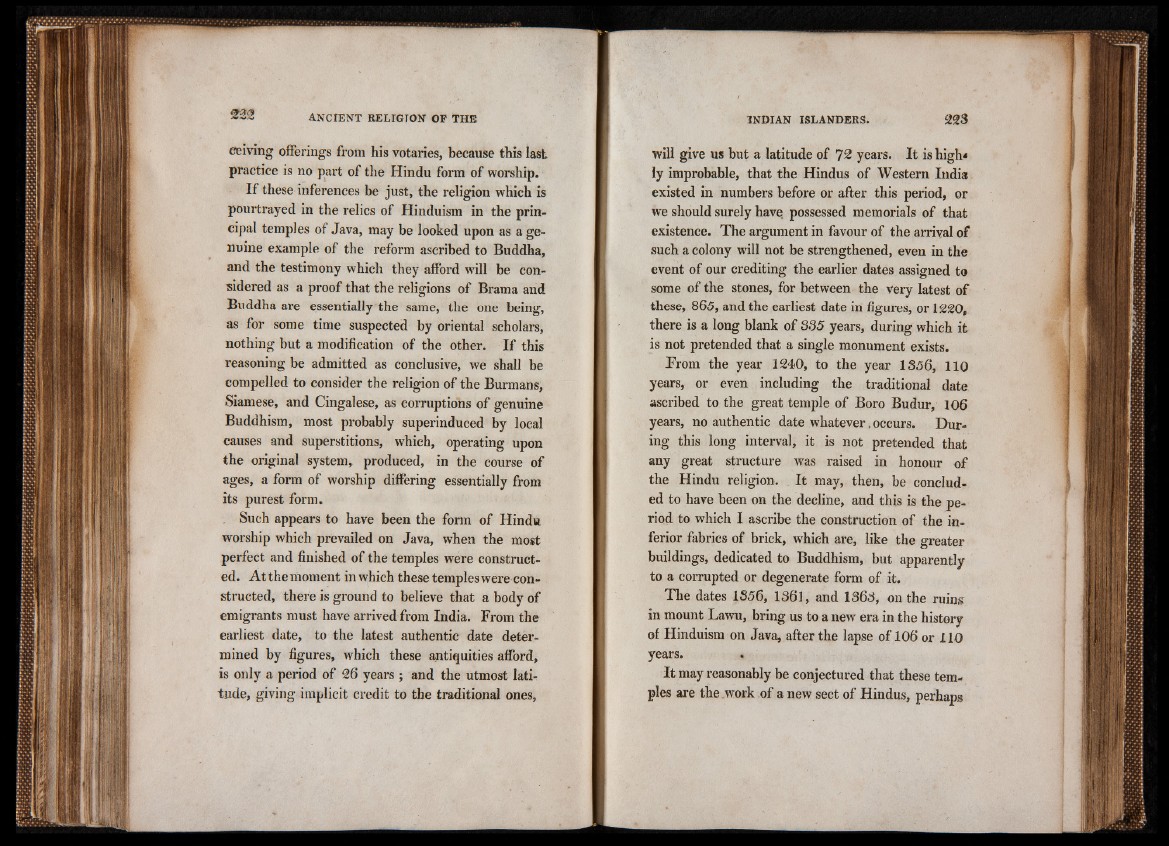
Geiving offerings from his votaries, because this last
practice is no part of the Hindu form of worship.
If these inferences be just, the religion which is
pourtrayed in the relics of Hinduism in the principal
temples of Java, may be looked upon as a genuine
example of the reform ascribed to Buddha,
and the testimony which they afford wrill be considered
as a proof that the religions of Brama and
Buddha are essentially the same, the one being,
as for some time suspected by oriental scholars,
nothing but a modification of the other. If this
reasoning be admitted as conclusive, we shall be
compelled to consider the religion of the Burmans,
Siamese, and Cingalese, as corruptions of genuine
Buddhism, most probably superinduced by local
causes and superstitions, which, operating upon
the original system, produced, in the course of
ages, a form of worship differing essentially from
its purest form.
Such appears to have been the form of Hindu
worship which prevailed on Java, when the most
perfect and finished of the temples were constructed.
At the moment in which these temples were constructed,
there is ground to believe that a body of
emigrants must have arrived from India. From the
earliest date, to the latest authentic date determined
by figures, which these antiquities afford,
is only a period of 26 years ; and the utmost latitude,
giving implicit credit to the traditional ones,
will give us but a latitude of 72 years. It is high*
ly improbable, that the Hindus of Western India
existed in numbers before or after this period, or
we should surely have, possessed memorials of that
existence. The argument in favour of the arrival of
such a colony will not be strengthened, even in the
event of our crediting the earlier dates assigned to
some of the stones, for between the very latest of
these, 865, and the earliest date in figures, or 1220,
there is a long blank of S35 years, during which it
is not pretended that a single monument exists.
From the year 1240, to the year 13 5 6 , 1 10
years, or even including the traditional date
ascribed to the great temple of Boro Budur, 106
years, no authentic date whatever. occurs. During
this long interval, it is not pretended that
any great structure was raised in honour of
the Hindu religion. It may, then, be concluded
to have been on the decline, and this is the period
to which I ascribe the construction of the inferior
fabrics of brick, which are, like the greater
buildings, dedicated to Buddhism, but apparently
to a corrupted or degenerate form of it.
The dates 1356, 1361, and 1363, on the ruins
in mount Lawu, bring us to a new era in the history
of Hinduism on Java, after the lapse of 106 or 1 10
years.
It may reasonably be conjectured that these temples
are the .work of a new sect of Hindus, perhaps